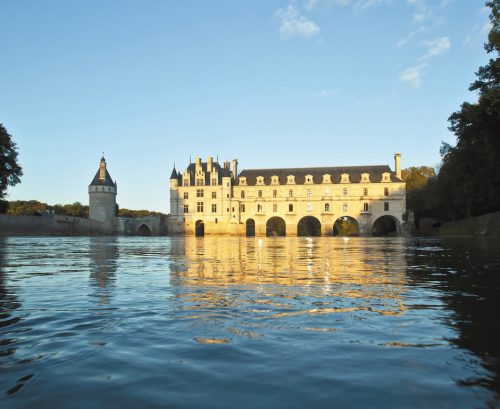
BY JUDY CARMACK BROSS
Consider a magical virtual tour offered by The Alliance Française de Chicago each Thursday at noon between January 14 and March 25 to ten of the most historic chateaux in the Loire Valley and the Ile-de-France near Paris. Each week author Russell Kelley will introduce viewers to the châtelain or châtelaine of such prestigious properties as Vaux-le-Vicomte or Chantilly for a tour and live transatlantic talk from France.
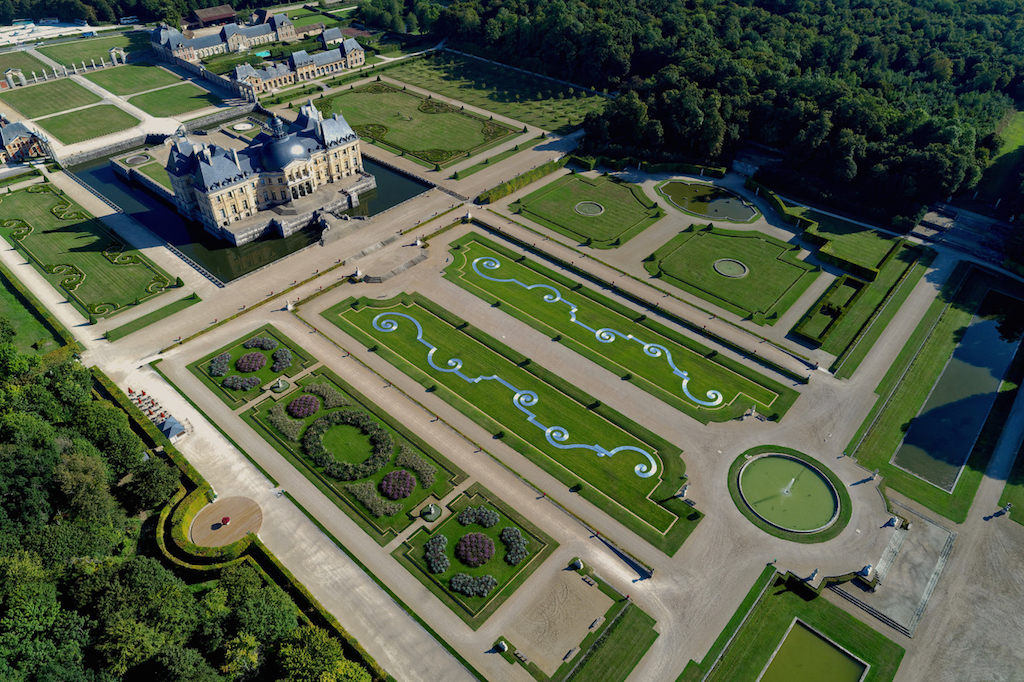
Chateau de Vaux-le-Vicomte side angle. Photo by Bruno Lepolard.
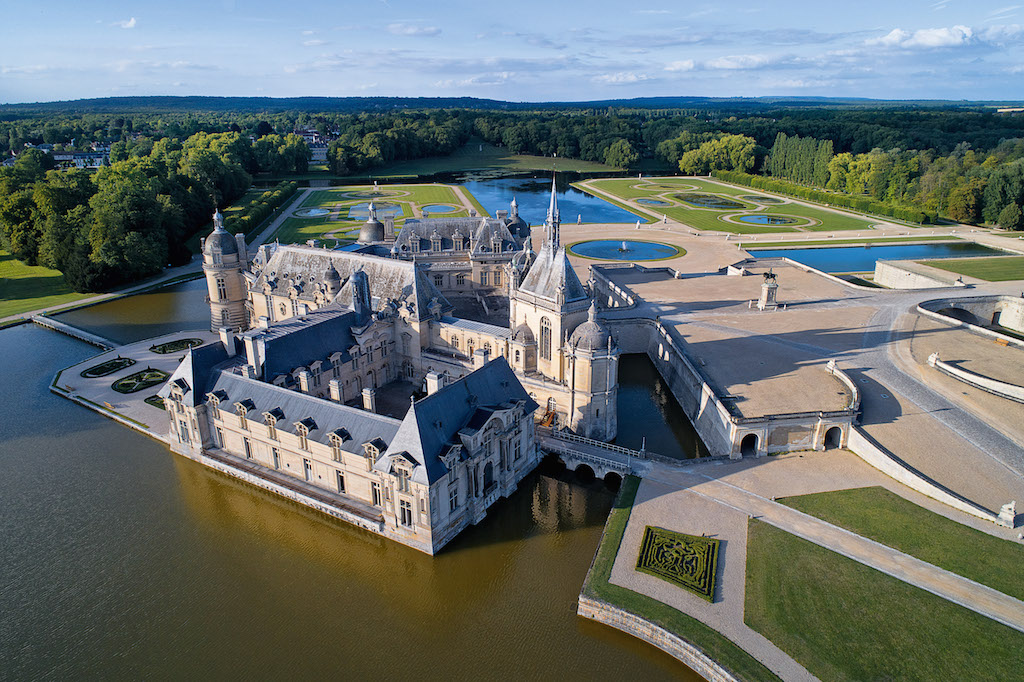
Château de Chantilly. Photo by Marc Walter.
Kelley mixes architecture with history and royalty, tracing the evolution of the French château from the earliest stone towers and châteaux forts of the Middle Ages, through the magnificent Renaissance châteaux built by the Valois kings in the Loire Valley upon their return from the Italian Wars, and on to the châteaux de plaisance built by the Bourbon kings and queens and their courts in and around Paris in the French Classical style.
The first stop is the Chateau d’Amboise, recreated by King Charles VIII in the Italian style where François I brought back Leonardo di Vinci from Italy to live in a manor house nearby with his unfinished painting of the Mona Lisa. “The series isn’t about the ceramic collections at the chateaux, rather about their history and the characters involved in each, as well as their architectural evolution,” Kelley, who gives an introduction to the series on January 14, explains.
Mary Ellen Connellan, Executive Director of the Alliance Française Chicago, shares, “We are very excited about this superb series that once again provides online programming that is captivating and fresh in the midst of a challenging year. In this instance, one of our devoted board members introduced us to the charismatic, entertaining, and scholarly Russell Kelley, who is involved with the Alliance Française of Metro Miami. After that initial introduction, meticulous planning and brainstorming on the part of our staff, Miami Metro, and our Cultural Committee followed, and the rest is history.”
He collaborated with Solange Brown, Chair of the Alliance Chicago’s Board of Directors, on the series.
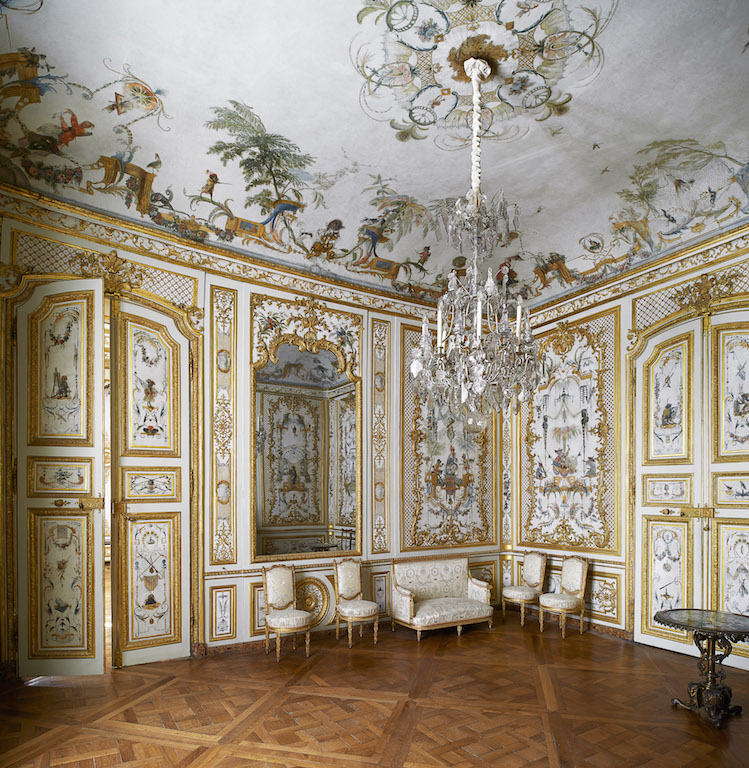
Chantilly interior. Photo by Marc Walter.
After Kelley told us this week from Florida about the series he has curated and moderates, we imagined being in a hot air balloon descending weekly to the castles, a novel pandemic escape. With this daydreaming spirit, we asked: If you could meet anyone from history on this chateaux tour, who would it be?
His response: “François I, who was King of France from 1515 until his death in 1547, was directly or indirectly involved in the construction or renovation of seven of the chateaux we profile. He was worked directly on five and his best friend built the other two. Educated at Amboise and a true patron of the arts, François was inspired by the architecture of the Italian Renaissance and began construction of the Chateau of Chambord early in his career. He connects our whole series in the Loire Valley. In addition, he reconstructed and expanded the Chateau de Louvre and Chateau de Fontainbleau.”

François I.

Chateau de Chambord. Photo by Sophie Lloyd.
A board member of the Alliance Française Miami Metro, Russell Kelley is author of The Making of Paris: The Story of How Paris Evolved from a Fishing Village into the World’s Most Beautiful City, to be published by Globe Pequot Press in March 2021. He has lived in France for nearly 30 years and has visited every château featured in this series many times since his first visit to the Loire Valley 50 years ago.
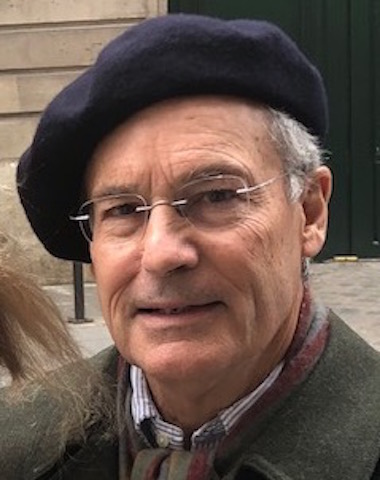
Russell Kelley.
His Paris apartment stands just 20 yards from Notre Dame, which suffered a horrific fire on April 15, 2019: “We are on the second floor and can look over the fence at the tremendous amount of work going on to save it. Wooden frames are used to support the walls and flying buttresses hold everything in place. They have removed a huge misshapen lump of melted pipes at the top of the vaults by the where the steeple was, and they are now able to better assess the damage and develop a plan.”
One of the favorites among the Loire Valley chateaux, Chenonceau—sometimes called the “château des Dames” because of the nearly uninterrupted series of women who built, embellished, protected, restored and saved it—will be visited February 11.
Kelley explains the château’s history: “In 1512, the medieval château was purchased by Thomas Bohier, a treasury superintendent under François I, who immediately demolished all the old buildings except the keep (donjon). Between 1513 and 1517, his wife Catherine Briçonnet oversaw the construction of the new building, next to the keep. In 1535, upon discovering the embezzlement of royal funds by his father, François I confiscated the château from Thomas Bohier’s son.”
“In 1547, François I was succeeded by his son Henri II, who had married the formidable Catherine de Médicis in 1533,” he continues. “When Henri II became king, he gave the Château de Chenonceau to his favorite, Diane de Poitiers, who built the bridge with its five arches connecting the château to the north bank of the Cher. When Henri died following a jousting accident in Paris in 1559, Catherine promptly took possession of Chenonceau and added the two-story gallery that spans the river, causing Chenonceau sometimes to be called the ‘Ponte Vecchio of the Loire Valley.’ Chenonceau is a UNESCO World Heritage Site and is the most visited private château in France. As with all our visits, the hosts miss their American visitors who have come in person for years and are delighted to give a virtual tour.”
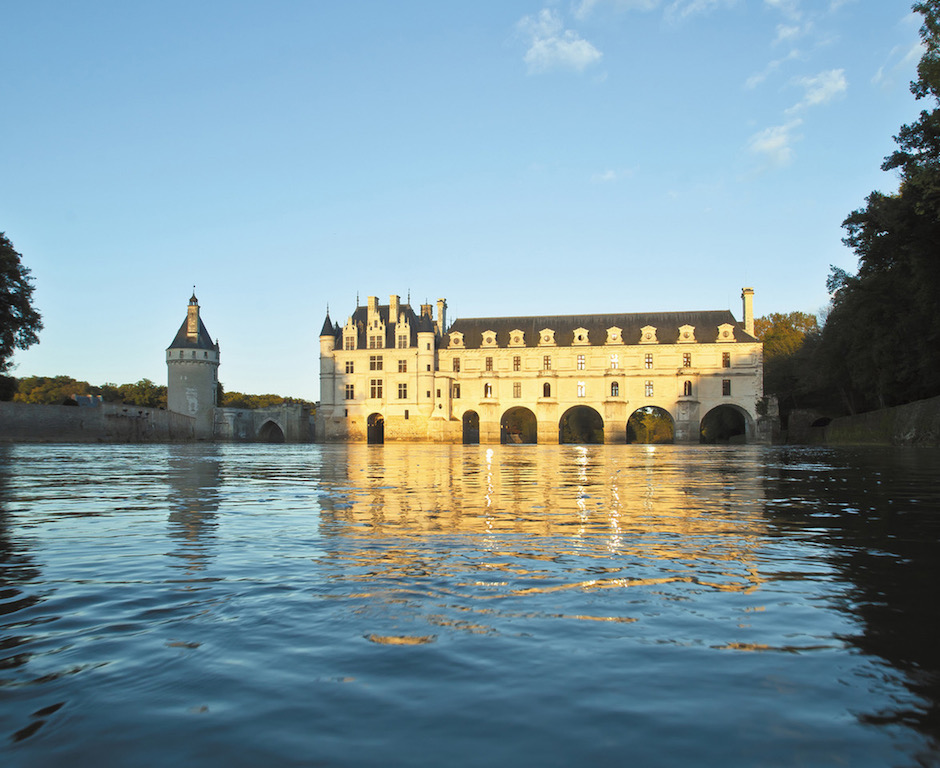
Chenonceau profil. Photo by Image de Marc.
Of all the ten chateaux featured in this series, Kelley selects the Louvre, the topic of his final lecture, as his favorite: “The history of the Château du Louvre spans the entire period covered by this lecture series, with all the great builder kings, emperors, and presidents and their architects enlarging and refining the Louvre over 800 years. It started in 1190 when Philippe-Auguste ordered the construction of a fortress to protect the western entrance to his new wall around Paris. Two hundred years later, Charles V transformed the fortress into a royal palace.”
He adds, “Two hundred years after that, Catherine de Médicis built the Château des Tuileries a quarter-mile downriver from the Louvre. In 1595 Henri IV drew up his Grand Dessein (Great Design) to develop the Louvre. It envisaged the construction of the Cour Carrée (Square Courtyard), a waterside gallery to connect the Louvre Palace with the Château des Tuileries, and a northern gallery opposite the waterside gallery, enclosing a vast courtyard between the Louvre and the Tuileries. It would take 250 years before Henri IV’s Grand Dessein would finally be completed by Napoléon III, and another 100 years before the Grand Louvre project initiated by François Mitterrand culminated in the inauguration of I. M. Pei’s Pyramide du Louvre in 1989.”
Kelley expresses high regard for the people and events in French history. “I like to paraphrase a quote, which I feel refers to François I and the other monarchs involved with these chateaux who might begin to construct these projects and know that they couldn’t expect to see the end,” he says. “It goes something like this: ‘If you worry about finishing something, then you will never start it.’ ”
Though it is unclear when the end will be in sight for the pandemic, the Alliance has been supremely skillful in sustaining excellent programming throughout. Mary Ellen Connellan explains, “Having a Cultural Committee, composed of board members and representatives from various disciplines, is an invaluable part of the process. It requires years of building relationships with a myriad of cultural partners, both within our city and beyond, such as the Chicago Department of Cultural Affairs and Special Events, the Federation of Alliances Françaises USA, and the French Heritage Society, but it certainly pays off. These collaborations allow us to disseminate our programming broadly, not only in the United States, but globally. Online technology has put the world at our doorstep with participants all over the USA, Canada, Argentina, Paris, the Caribbean, and more.”
To register for the series, starting January 14, click here. Support the Alliance and save on the series by becoming a member for as little as $75/year. Visit af-chicago.org/membership for more information.



